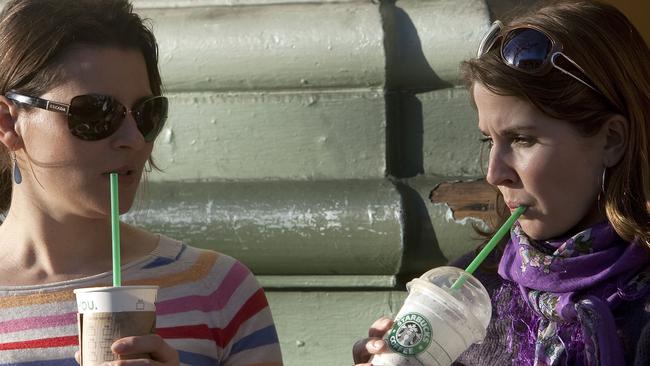New owners want to give Starbucks chain a second shot in Australia
STARBUCKS did everything wrong when it first entered Australia almost 15 years ago. Its new owners want a second shot at getting it right.

QLD Business
Don't miss out on the headlines from QLD Business. Followed categories will be added to My News.
STARBUCKS did everything wrong when it first entered Australia almost 15 years ago.
By 2008 it boasted 81 stores but had lost $143 million in the process of rolling them out.
It was subsequently forced to close two-thirds of its outlets, sacking 685 staff.
Last week, the Melbourne-based Withers Group bought the remaining 24 stores from the US coffee giant.
Withers is one of Australia’s most successful retailers, running 600 or so 7-Eleven outlets around the country.
Withers chief Warren Wilmot (pictured) has lofty ambitions, wanting Starbucks to become “the most successful coffee chain in Australia”.
This means new stores — owned by Withers rather than franchisees — will open in busy city areas.
“We are not buying the business to sit on it,” Mr Wilmot said. “Growing store numbers will be one of our primary opportunities.”

What consumers won’t see is Starbucks appearing in 7-Eleven stores, which offer $1 cups of coffee.
“We want to keep the brands separate,” he said.
Despite its disappointing track record in Australia, Starbucks is a global success story.
It is the most successful coffee chain in the world, boasting more than 18,000 stores in 62 countries.
In China,It has opened a new cafe every five days in China since entering that market 16 years ago. Retail experts say Starbucks’ Australian experience is a business 101 example of what not to do when entering a new market.
Paul Patterson, the head of the school of marketing at the University of NSW, said the coffee juggernaut’s fundamental mistake has been assuming the Australian market mirrored the US.
He pointed out Starbucks introduced Americans to the cafe experience.
As such they became a premium brand with the distinctive Starbucks’ cup and sleeve turning up in the hands of US celebrities.
In Australia, Starbucks took on a well-established coffee culture introduced by successive waves of post-WWII European immigrants.
“Starbucks was rather arrogant is assuming that Australians would fall in love with a premium American brand,” Prof Patterson said.
“Australians didn’t fall in love with Starbucks.There was an existing coffee culture in Australia.”
IBIS World senior industry analyst Ryan Lin sayssaid Starbucks’ key failing had been to try and impose its coffee tastes on Australian drinkers — and charge a premium for it.
That is, weak, sweet jumbo-sized coffees often flavoured with syrups and priced at a premium in a market that prefers strong espresso-based coffees.
“Starbucks has been trying to implant itself into Australia rather than grow alongside Australia’s coffee culture, which is already heavily entrenched,” Mr Lin says.said.
The analysts also said Starbucks made the classic mistake of trying to open too many stores too quickly.
“It’s a big call to come here and say we want to be the coffee of choice.”
This meant it picked poor locations, paid high prices and, at times, filled them with inexperienced staff.
They also failed to advertise — Starbucks rarely does, relying on worldword of mouth.
“They don’t do above-the-line (expense heavy) marketing,” Prof Patterson says.
“But in a market as competitive as Australia they really needed to communicate their message and point of difference,” Prof Patterson said.
Starbucks China and Asia Pacific president Jeff Hansberry said this time around, the Withers Group will bring to the equation local know-how and experience.
IBIS’s Mr Lin says said the success of The Coffee Club, Gloria Jean’s and Hudsons shows coffee chains can work in Australia if the location and product offering is right.
“Coffee chains are doing well in tourist destinations and places like airports and other high traffic sites,” he sayssaid.
“Those places should benefit a chain like Starbucks.”
Prof Patterson is less optimistic.
He points out the Australian market is dominated by some 10,000 independent cafes that know their customers and deliver a highly-personalised service.
“They have good baristas, they have good technology, they have good coffee, they know what their customers like and they know their customers,” he says.
“Starbucks have really been successful in countries which haven’t had a coffee culture such as the US. They are having huge success in China because that is a tea-drinking nation and they are introducing them to coffee.
“But they have basically failed in France, they are not in Italy and they are not in Vietnam in a meaningful way. All those places have strong coffee cultures.
“I think they will struggle because the competition here is already so well entrenched.”


